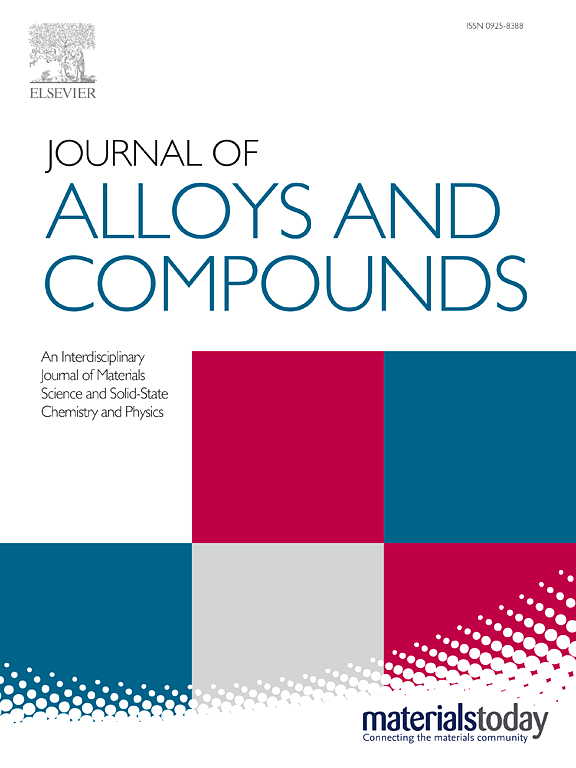辐射对高熵纤维增强铝基合金组织和硬化行为的影响
IF 5.8
2区 材料科学
Q2 CHEMISTRY, PHYSICAL
引用次数: 0
摘要
高熵合金以其优异的力学性能和耐辐照性能成为空间反应堆结构材料的重要组成部分。然而,传统铁基HEAs的高重量和维护成本限制了它们的实际应用。在这项研究中,一种新型的高熵纤维(HEF)增强铝合金Al96(NiCoFeCr)4,通过将典型的康托合金元素(Fe, Co, Ni和Cr)加入轻质铝基体中而开发出来。用3 MeV Al离子在150 ℃下辐照hef强化合金和纯Al,辐照损伤峰值达到50 dpa。系统地研究和讨论了hef增强铝的微观组织演变。对比分析表明,hef强化后的Al比纯Al的耐辐照性明显增强。这是由于本研究提出的Cr - Al原子交换机制,其中Cr原子从hef向基体迁移,而Al原子向相反方向扩散。两种材料表现出不同程度的辐照诱导硬化速率,这可以用hef和辐照诱导缺陷的演变来解释。这些发现为开发用于太空核反应堆的轻质、抗辐射结构材料提供了有价值的见解。本文章由计算机程序翻译,如有差异,请以英文原文为准。

Radiation effects on microstructure and hardening behavior in high-entropy fiber strengthened Al-based alloy
High-entropy alloys (HEAs) are promising structural materials for space reactors due to their exceptional mechanical properties and irradiation resistance. However, the high weight and maintenance costs associated with conventional Fe-based HEAs limit their practical use. In this study, a novel high-entropy fiber (HEF)-strengthened aluminum alloy, Al96(NiCoFeCr)4, was developed by incorporating typical Cantor alloy elements (Fe, Co, Ni, and Cr) into a lightweight Al matrix. Both the HEF-strengthened alloy and pure Al were irradiated with 3 MeV Al ions at 150 °C, reaching a peak irradiation damage level of 50 dpa. The microstructural evolution of the HEF-strengthened Al was systematically investigated and discussed. Comparative analysis revealed that the HEF-strengthened Al exhibited significantly enhanced irradiation resistance compared to pure Al. This improvement is attributed to the Cr–Al atomic exchange mechanism proposed in this study, wherein Cr atoms migrate from the HEFs into the matrix, while Al atoms diffuse in the opposite direction. The two materials exhibit different degrees of irradiation-induced hardening rate, which can be explained by the evolution of HEFs and irradiation-induced defects. These findings offer valuable insights into the development of lightweight, irradiation-resistant structural materials for space nuclear reactors.
求助全文
通过发布文献求助,成功后即可免费获取论文全文。
去求助
来源期刊

Journal of Alloys and Compounds
工程技术-材料科学:综合
CiteScore
11.10
自引率
14.50%
发文量
5146
审稿时长
67 days
期刊介绍:
The Journal of Alloys and Compounds is intended to serve as an international medium for the publication of work on solid materials comprising compounds as well as alloys. Its great strength lies in the diversity of discipline which it encompasses, drawing together results from materials science, solid-state chemistry and physics.
 求助内容:
求助内容: 应助结果提醒方式:
应助结果提醒方式:


